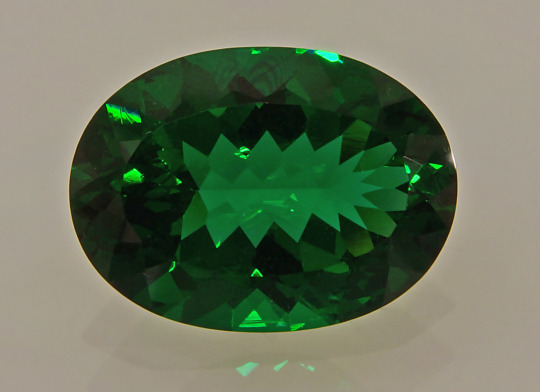by Debra Wilson

When Mount St. Helens erupted in the State of Washington on May 18, 1980, it became the deadliest and most economically destructive volcanic eruption in the history of the contiguous United States. The devastating results were not only measured by the fatalities and massive destruction but it also left behind about 540,000,000 tons of ash over an area of more than 22,000 square miles. The enormous task of cleanup was daunting. This is where serendipity stepped in to create great beauty from the ashes.
During the salvage effort, workers from a regional timber company were using acetylene torches to cut through twisted metal debris and they accidentally discovered that the torch melted the volcanic ash into a green glassy substance. This led to laboratory experiments that determined green glass could be produced by heating the ash to 2700° Fahrenheit and then rapidly cooling it. The glass quickly began being commercially produced and faceted into gemstones. It is marketed under the names Obsidianite, Helenite, Emerald Obsidianite or Mount St. Helens Obsidian. Its stunning green color has made it an attractive alternative to the more expensive emerald gemstone, though not as durable (a hardness of 5 to 5 ½ as compared to 7 ½ to 8 for emerald). Blue and red varieties are also produced by adding coloring agents to the melt.
The Section of Minerals obtained a faceted stone of Obsidianite as part of a donation of gemstones in 2009. It is a green oval cut stone, as you can see from the photo, and weighs 42.1 carats. This stone is now on display in the Treated & Synthetic Stones case in Wertz Gallery.
Debra Wilson is the Collection Manager for the Section of Minerals at Carnegie Museum of Natural History. Museum employees are encouraged to blog about their unique experiences and knowledge gained from working at the museum.
